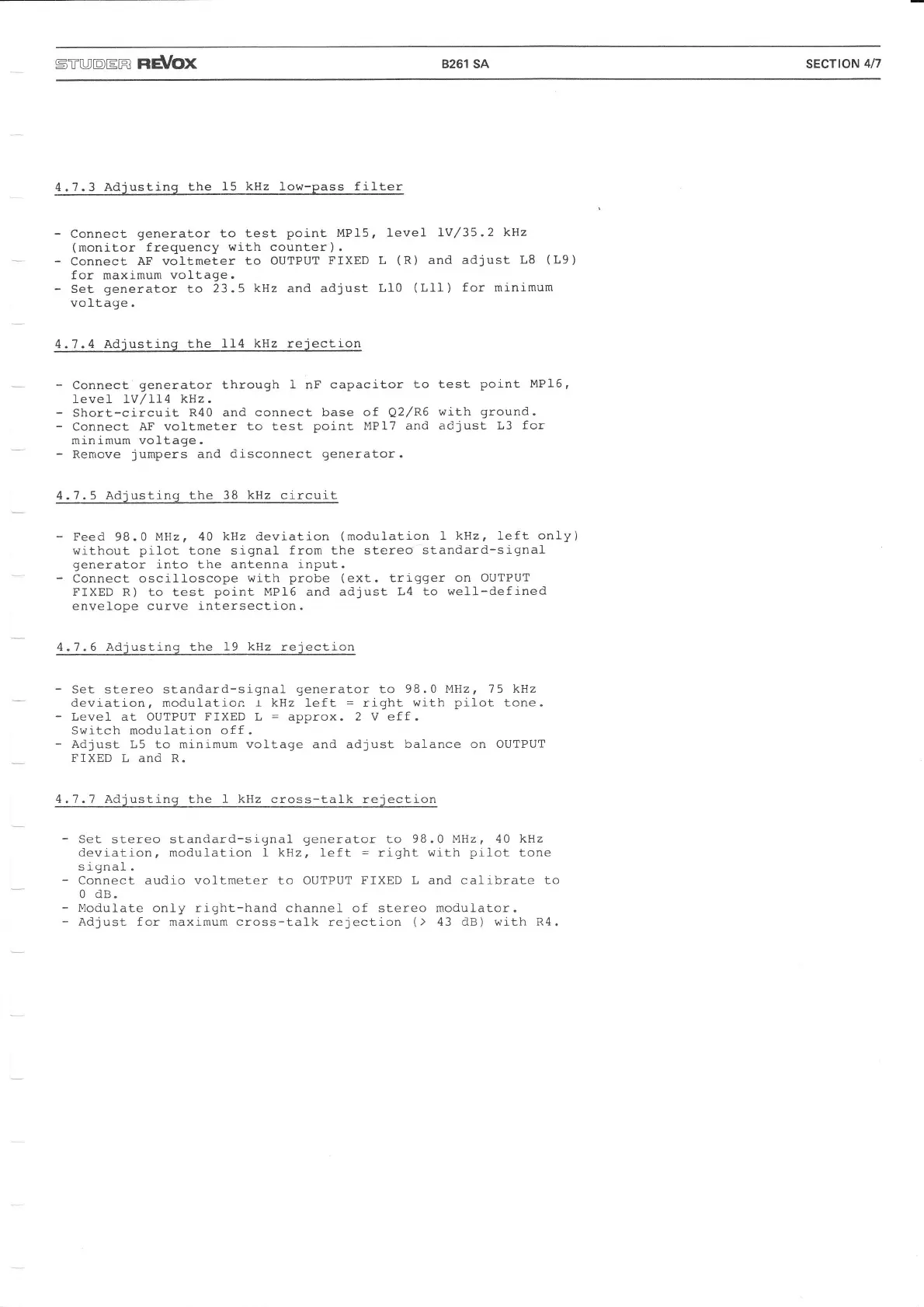sruotrR nd/ox
8261 SA sEcTroN
4/7
4.7.3
Adjusting
the
f5 kHz
low-pass
filter
-
Connect
generator to test
point
MPl5, level
Lv/35.2
kP^z
(moni,tor
frequency
with
counter).
-
connect AF voltmeter
to ourPUT
FrxED L
(R)
and adjust
L8
(L9)
for
maximum
voltage.
-
Set
generator
to
23.5
kHz
and adjust
LIO
(L11)
for minimum
voltage.
4.7.4 Adjusting
the
f14 kHz
rejection
-
Connect
generator through I nF capacitor
to test
point
MP16,
leveI
1V,/1I4 kHz.
-
Short-circuit R40 and
connect base of
Q2/R6
with
ground.
-
Connect AF voltmeter
to test
point l[Pl7 and
adjust L3 for
min
j,mum
voltage.
-
Remove
jumpers
and
disconnect
generator.
4.7.5 Adjusting the
38 kHz cj-rcuit
-
Feed
98.0
MHz, 40 kIJz deviati"on
(modulation
1 kHz, Ieft
only)
without
pilot
tone
signal from the stereo'
standard-signal
generator
into the antenna
input.
-
Connect
oscilloscope
with
probe
(ext.
trigger on
OUTPUT
FIXED
R) to test
point
MP16 and adjust
L4 to welL-defined
envelope curve intersection.
4.7.6 Adjusti-ng the
19 kHz
rejection
-
Set stereo standard-signal
generator
to
98.0 MFlz, 75 k}Jz
deviation, modulatior:
r
kHz left
=
right
with
pilot
tone.
-
Level at OUTPUT
FIXED
L
=
approx. 2 V eff.
Switch modulation off.
-
Adjust L5 to minimum voltage and adjust balance on
OUTPUT
FIXED L and R.
4.7.7 Adjusting the I kHz cross-taIk
rejection
-
Set
stereo standard-signal
generator
to 98.0
MHz,
40
kRz
deviation,
modul-ation f kHz, left
=
right
with
prlot
tone
ci,,h11
-
Connect audio voftmeter to OUTPUT
FIXED L
and calibrate
to
0 dB.
-
llodulate
only right-hand channel
of
stereo modulator.
-
Adjust for maximum cross-talk
rejection
(>
43 dB) wi.th R4.
